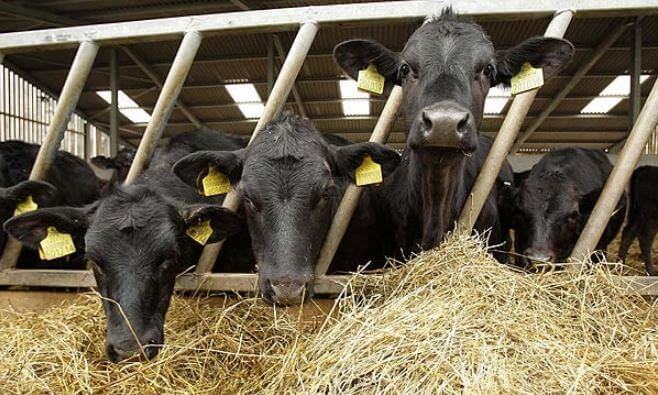One of the foods that are frequently consumed in Nigerian homes is beans. So, the importance can not be overemphasized. They are rich in protein and fiber and have many nutrients that are nutritious to the human body.
Beans have different varieties, and the species most planted in Nigeria is called cowpea.
Cowpea is otherwise known as Blackeye pea and is one of Africa’s most nutritious and widely eaten varieties of beans. It is commonly grown in Africa, Latin America, and Southeast Asia. Beans are sometimes associated with a grain crop and are always found in the sorghum family, etc.
Nigerians consume beans in large quantities because of their high protein content, but the sad thing is that the price of beans is still high. With this report, we can tell that the demand is much higher than the supply.
It is even more saddening that Nigeria imports beans in large quantities yearly from other countries to feed its growing population. It is crystal clear that there is a need to invest more resources in the commercial production of beans in Nigeria.
The versatility of beans makes them desirable for all. Big or small, rich or poor, many people love to eat beans. Its affordability is also a primary reason why lots of Nigerians stick to this particular food produce.
They always love to eat beans, if not every week, then at least once in a while. In Nigeria, there is a good number of This goes to show the number of people that have beans as one of their most relevant food.
Table of Contents
Importance and Benefits of Beans
- It helps in weight management – Beans contain many calories, and it is instrumental in weight management because little amounts of it can make one feel full quickly.
- It helps to reduce cancer.
- It contains high fiber content, which is very important in lowering blood sugar levels.
- Beans have some antioxidant properties, which make them act as a detoxifier.
- It is essential in bodybuilding due to its protein content, and it also helps develop new body tissues.
- It contains low-fat content.
- It is an excellent source of carbohydrate.
- It creates income and employment for those who engage in the business of beans farming.
- It boosts the national economy as less money will be spent importing beans and internal revenue will be generated from the proceeds of sales.
In this article, I will be taking you on the different processes and steps to establishing a beans farm in Nigeria.
Step-by-Step Guide To Starting a Lucrative Beans Farming Business In NIgeria

Below are the standard procedures to take when starting a beans farming business
- Land Acquisition
- Land and Soil Preparation
- Seed Selection
- Planting of Beans
- Weeding and Watering of Beans
- Pest and Disease Control
- Harvesting of Beans
- Sales of Beans
1. Land Acquisition
Getting a piece of fertile land for planting is the first step in starting a beans farm in Nigeria. If you intend to do beans farming on a commercial scale, getting extensive land should be top of your wishlist.
Acquiring land running into hectares should not only be your sole objective but getting access to plots or hectares of land in a decent location.
Remember that you will be spacing the bean crops to avoid overcrowding and make sure that they grow well. So, you must get a large land since you intend to farm for commercial purposes. Next, construct a fence around the land area to secure it from land grabbers, thieves, and pests that may attack the crop.
2. Land and Soil Preparation
Land preparation can be done manually using hoes and cutlass or mechanically with the use of tractors. It will be best to give the land a clean sweep by uprooting any tree and getting rid of weeds and other unwanted plantations. Doing this will allow the sun to penetrate the soil. The soil should also be tilled to a depth of 6 to 8 inches.
Then, loosen and mix up the organic matter at the topsoil to allow for easy growth of the plant. Organic manure can be added to the soil to increase fertility. Ensure that the soil is well-drained loamy soil and should have a PH range of 5.5 to 6.5.
3. Seed Selection
After land preparation, the next step is to select the seed variety you want to plant. There are different varieties of beans, and the one most cultivated in Nigeria is cowpea. Select and buy healthy and disease-free seeds.
This will ensure that you get maximum yield on your farm and will not lead to the farm’s outbreak of disease and infection. Cowpea grows in pods, and healthy seeds can produce between 3 -8 grains of cowpea inside. Each plant can have many pods. The yield of your beans will also depend on the number of seeds you are planting.
4. Planting of Beans
Beans are usually planted with the eye facing down and should be planted at 1 to 2 inches deep, 3 to 4 seeds in a hole, and spacing should be kept at 18 to 24 inches apart. Beans require full sun and fertile, well-drained soil for maximum yield.
Apply organic matter and fertilizer into the soil before planting. Doing this allows for quick germination and a sufficient supply of nutrients to the beans seedling.
5. Weeding and Watering of Beans
Weeding should be done once beans begin to germinate to avoid competition with unwanted plants, which might lead to the death of your seedlings, thereby affecting the overall yield. Use hoe and cutlass to weed.
Be careful while weeding to avoid causing injury to the bean stem. Beans require at least one inch of water a week for good growth. Therefore, watering should be done at least twice a week, especially in dry seasons. Avoid overwatering of beans because it may lead to the death of plants.
6. Pest and Disease
Pest and Disease Control
Some of the pests that frequently attack beans are the bean stem maggot and bruchids. Apply pesticides to avoid insect attacks which can deteriorate beans’ yield. Watch out for the emergence of diseases in beans and control early to prevent the diseases from spreading across the entire farm. Some of the common diseases that affect beans and their symptoms are listed below:
● Anthracnose: Anthracnose is mostly caused by fungi. Symptoms are sunken brown lesions on leaves, lesions covered in pink spore masses during the wet period. Anthracnose can be controlled by planting resistant varieties.
● Asochyta Blight: Asochyta Blight is a fungi infection, and it causes severe defoliation of plants. It can be managed by planting disease-free varieties.
● Bacterial Blight: Bacterial Blight causes water-soaked spots on leaves which enlarge and become necrotic; lesions coalesce and give a yellow discoloration. It is a result of bacterial infection and is controlled by planting disease-free varieties.
7. Harvesting of Beans
Beans crops are harvested after a period of 90 to 100 days after planting. The harvest is best done during the dry season to avoid exposing beans to water. Harvest is done by carefully opening the pods and removing the bean from its stem. Apply caution to prevent tearing the pod away from its branches.
8. Sales of Beans
After harvesting the beans, you can haul them from the farm to the market. Beans should be well packaged in bags and sold at the local market. You can consider selling your farm products through retail stores in the market.
Thus, your farm products can reach the end-users and consumers quicker through the aid of the retailers. Beans can further be used to make traditional recipes such as gbegiri, moimoi, and akara. You can approach the sellers of these foods and propose regularly supplying them with large quantities of beans.
Conclusion
Most food items Nigerians consume daily are made from beans. Be it the regular akara or moimoi eaten as breakfast or other combinations like rice and beans. Beans have received wide patronage from consumers in Nigeria.
It is rare to see people boycotting beans for another food item. Therefore, it is never a bad idea to go into beans cultivation. Anyone looking for profitable agribusinesses to invest in should consider delving into beans farming because it is a very lucrative sector to venture into.
This article has provided a step-by-step guide on how to start a beans farming business in Nigeria. I believe this article will help guide you on the necessary processes and steps involved in beans farming.





